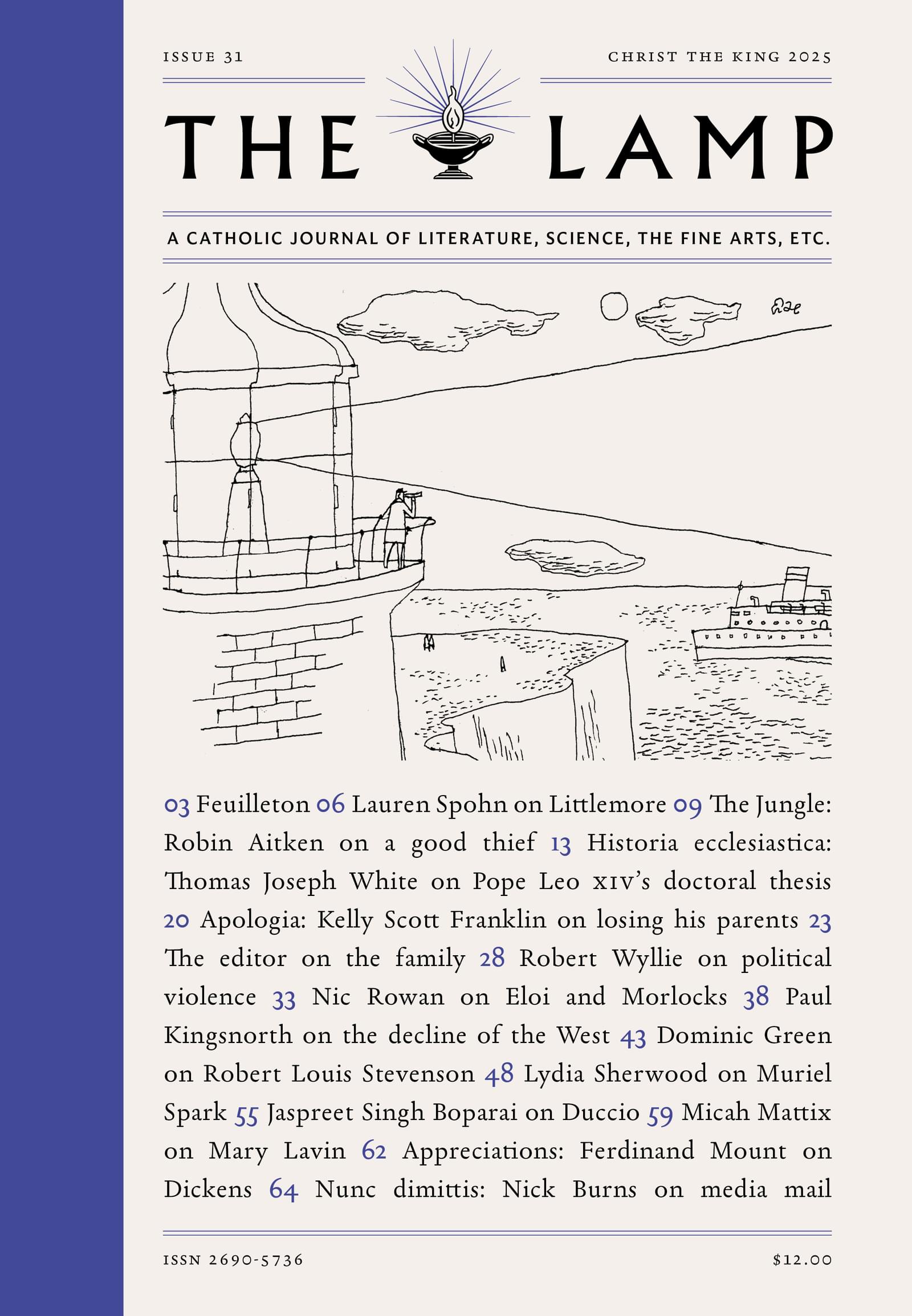Arts and Letters
Lucid Dreaming
When Brains Dream: Exploring the Science and Mystery of Sleep, by Antonio Zadra and Robert Stickgold; The Book Of Sleep, by Haytham El Wadany (translated by Robin Moger); The Chinese Dreamscape: 300BCE – 800CE, by Robert Ford Company; Sleep In Early Modern England, by Sasha Handley
Lucid Dreaming
When Brains Dream: Exploring the Science and Mystery of Sleep
Antonio Zadra and Robert Stickgold
Norton, pp.336, $27.95
Haytham El Wadany
(translated by Robin Moger)
Seagull Books, pp.168, $21.50
The Chinese Dreamscape: 300BCE – 800CE
Robert Ford Campany
Harvard, pp.310, $30.00
Sasha Handley
Yale, pp.296, $30.00
Has anyone with a first-rate literary intelligence, someone along the lines of Elizabeth Sewell or Denis Donoghue, written a substantial account of dreams as depicted in fiction? Someone of that caliber must have, but I don’t recall encountering any such thing, just dribs and drabs, mostly muddled. (Perhaps my aging brain has simply forgotten it.) The obvious point of departure would be the utter implausibility of most fictional dreams, even in the work of gifted writers (Lockwood’s dream early in Wuthering Heights would be a good example, but they are legion.) Dreams as presented in novels or stories rarely feel like dreams (even granting that your dreams, say, may regularly be quite different from mine); rather, they are painfully obvious contrivances.
This failure is not merely of literary interest. Dreams and sleep more generally are at once quintessentially mundane and abidingly strange. To do justice to this tension is not easy, and yet no account of “the human person” that fails to do so is remotely adequate. After all, as we are regularly reminded, we spend a good part of our lives sleeping and dreaming. Even so, those of us who believe, for instance, that God may sometimes speak to us through dreams (two close friends of mine were converted thus) can learn a good deal from writers who see our common experience otherwise.
When Brains Dream: Exploring the Science and Mystery of Sleep is the work of two researchers who have collaborated for years, Antonio Zadra and Robert Stickgold. They are genial guides to the intricacies of their subject, seeking to establish rapport with their readers while not dumbing down their findings. Of course, brains don’t dream; neither do they take walks, watch the Chicago Cubs, or write books. Human persons do those things, which certainly requires brains. Why then this title? I don’t know. Maybe we can blame it on someone in marketing, who thought it sounded hip or transgressive.
Although I’ve read a lot of books about sleep and dreams (some of which have put me to sleep), I learned a lot from this one. Zadra and Stickgold have a theory of their own (more in a moment on that), but they are admirably fair minded and careful to note differing views. This approach is a welcome contrast to the dogmatism of some prominent sleep researchers (Allan Hobson, for instance). And while they provide a historical survey of notions about sleep and dreaming from antiquity onward, with special attention to the evolution of scientific theories devoted to the subject, the bulk of the book draws on their own research in “sleep labs” from the early 1990s to the present.
I must admit that I find these sleep labs deeply creepy. I’m not suggesting that the studies conducted by Zadra, Stickgold, and a host of other researchers are unethical. Their subjects have willingly consented to be hooked up with electrodes, waked up, quizzed, etc. (I wondered why anyone would do this.) You can see samples of their findings in the tables on pages 166 and 167, which list “Thematic Categories in Nightmares and Bad Dreams” and “Frequency of Themes in Nightmare and Bad Dreams.” For instance, seven percent of nightmares involve “Insects and vermin” (ugh); oddly, “Losing books” doesn’t even make the cut.
Based on their own studies and other research, Zadra and Stickgold have evolved a theory of dream function they call N.E.X.T.U.P. (Network Exploration to Understand Possibilities), which they elaborate at length. See especially chapter eight, in which they seek to explain “why a human brain must dream to carry out critical components of its sleep-dependent memory evolution function.” I was underwhelmed, but you may find it illuminating; in any case, you needn’t accept their model to profit from their book.
The Book of Sleep, by Haytham El Wardany, translated from the Arabic by Robin Moger, is difficult to categorize. Perhaps that’s no surprise, given that El Wardany, whom I haven’t previously read, is described as “an Egyptian writer of short stories and experimental prose who lives and works in Berlin.” The book is made up of many brief “entries,” some of which seem to be accounts of dreams, some meditations (such as one called “Morning Sleeplessness,” which begins with a reference to Rilke), and some harder to categorize. I mention it here because many of the entries that appear to recount dreams (such as “A Hidden Force”) have a feeling of genuineness that so many purported accounts of dreams lack; this is true whether or not El Wardany is “recounting” a dream or simply “making it up” with a persuasiveness that most imagined dreams lack.
Robert Ford Campany’s Chinese Dreamscape is a fascinating ragbag of a book. If you pick it up and read the first few pages of the first chapter, “Mapping the Dreamscape,” you will get its flavor, which may or may not be to your taste: intensely “academic” (for me not necessarily a pejorative), self-conscious, aware of a vast number of predecessors and contemporary interlocutors, but also with a personal voice and point of view. What makes Campany’s book valuable is the attention he pays to the wild variety of ideas about dreaming that he finds in China during this period.
Sasha Handley’s Sleep in Early Modern England is also intensely “academic” in a somewhat different way: impeccably researched, stiff (“This book is,” “This book will,” etc.), but deeply rewarding for anyone who has the patience to follow its argument—and especially so for readers who are Christians and who are interested in the ways Christians of another time thought about sleep:
Taking too much sleep reduced the time available for work and worship, damaged the vigour of mind and body, and was injurious to the soul, according to John Wesley. . . . Too much sleep was, he believed, “the chief, real, though unsuspected cause of all nervous diseases.”
Who knew? Wesley himself, of course, rose at four in the morning.
Handley’s book reminds me of another one published much longer ago, in 2005: At Close of Day: Night in Times Past, by A. Roger Ekirch. When it appeared, Ekirch’s book was widely and justifiably praised. Many readers were particularly struck by a chapter near the end of the book, “Sleep We Have Lost: Rhythms and Revelations,” which talked about the forgotten reality of “segmented sleep”: a period of “first sleep” followed by a period of wakefulness, which might be spent in bed but which also might entail rising for a time and engaging in other activities, to be followed in due course by “second sleep.” Despite a brief and rather patronizing reference to At Close of Day in Handley’s book, the evidence for this practice—by no means limited to England in the early modern period—is compelling. (The novelist Robert Harris employed it brilliantly in his novel The Second Sleep.) Even today, of course, mothers of infants and small children experience “segmented sleep” of a rather different kind.
Then there is “geriatric” sleep, I suppose we could call it. This gets short shrift in When Brains Dream, but it seems like a fertile field for researchers. Think of the millions of potential subjects. I don’t know to what extent my experience is normative, but in my early seventies I appear to dream as much as I used to. My dreams, however, are of poorer quality; Wendy, my wife, says the same of hers. On top of that, our recall of our dreams is grossly inferior to what it was ten years ago, let alone more than fifty years ago when we were first married.
Even so, we sometimes recount what fragments we can remember to each other, as we have done in decades past with fuller recall. From the beginning, we were struck by how different our dreams were from each other’s, and that remains true today. In fact, we often laugh with delight at the differences. And while the quality of our geriatric dreams is lamentably inferior, we continue to marvel at their “production values”: such complex scenarios and settings, such a mix of “characters,” all for a fleeting dream the purpose of which (despite our having absorbed the lessons of N.E.X.T.U.P.) mostly remains mysterious to us. Perhaps it’s enough that they remind us of all that exceeds our grasp.
John Wilson is a contributing editor at the Englewood Review of Books and senior editor at the Marginalia Review of Books.




